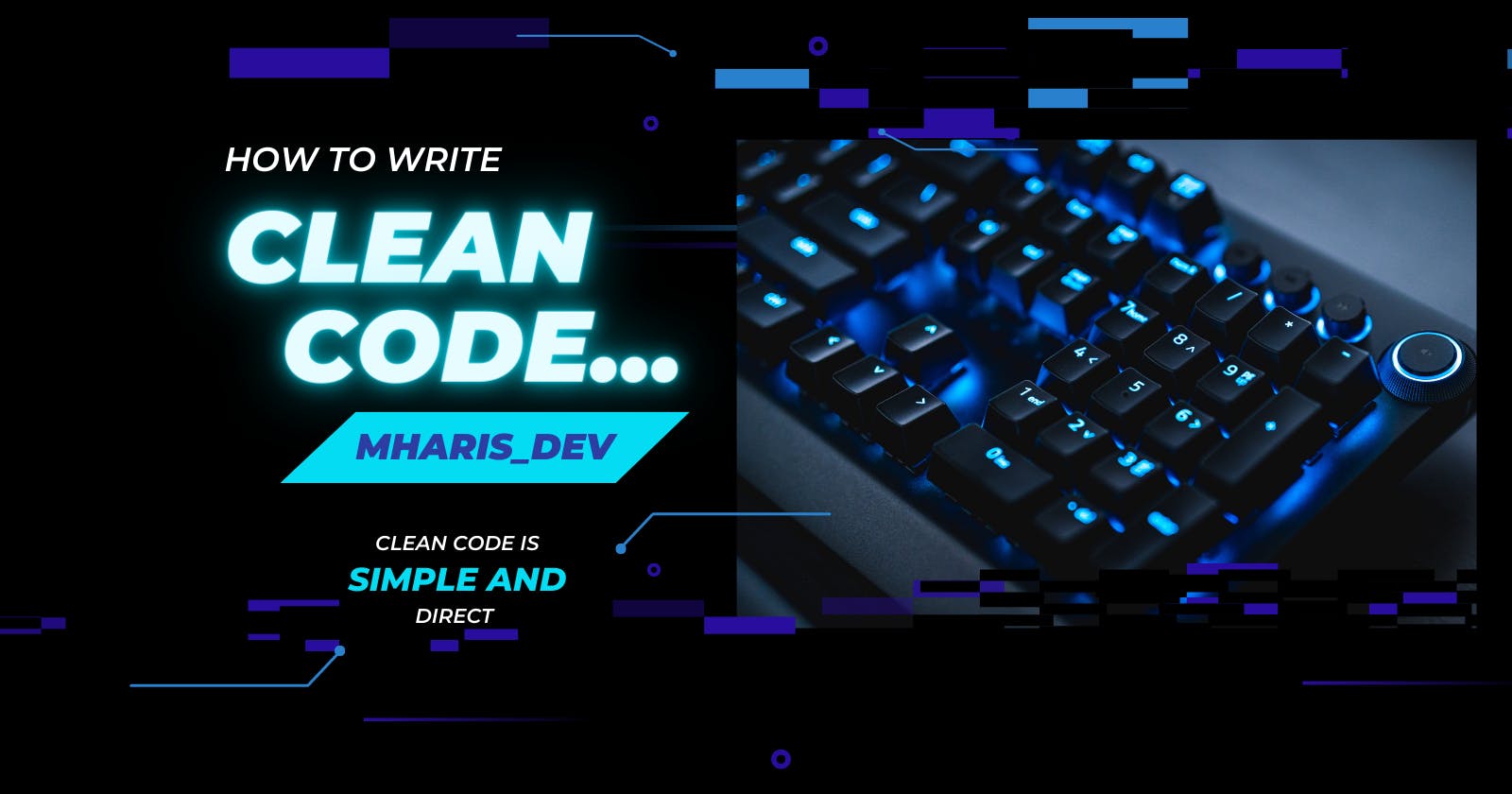Introduction
Writing clean code is an essential skill for developers. Clean code ensures that your code is easy to read, easy to understand, and easy to maintain. Writing clean code can be challenging, but with the right tools and techniques, you can make it a habit. In this article, we'll discuss how to write clean code at your fingertips.
What is Clean Code?
Clean code is code that is easy to read, easy to understand, and easy to maintain. It is code that follows established coding standards, is well-documented, and is free of clutter. Clean code is important because it makes it easier to identify and fix bugs, it reduces the risk of introducing new bugs, and it makes it easier for other developers to work with your code.
Tips for Writing Clean Code
1. Use Descriptive Names
Use descriptive names for variables, functions, and classes. Descriptive names make it easier to understand what your code is doing, even if you're not the one who wrote it.
2. Keep Functions Short
Functions should be short and do one thing. When functions are short, it's easier to understand what they're doing, and it's easier to test them.
3. Write Self-Documenting Code
Write code that is self-documenting. Your code should be easy to read and understand without comments. Comments should be used sparingly, and only when necessary.
4. Follow Coding Standards
Follow established coding standards. Coding standards ensure that your code is consistent and easy to read.
5. Use White Space
Use white space to make your code more readable. Use blank lines to separate logical sections of code, and use indentation to show the structure of your code.
6. Refactor Your Code
Refactor your code regularly. Refactoring is the process of improving the structure of your code without changing its behavior. Refactoring makes your code easier to understand and maintain.
7. Use Version Control
Use version control to manage your code. Version control makes it easy to track changes to your code, collaborate with other developers, and revert to earlier versions of your code if necessary.
Tools for Writing Clean Code
There are several tools that can help you write clean code. Here are some of the most popular:
1. Code Linters
Code linters are tools that analyze your code and identify potential issues. Code linters can identify things like unused variables, missing semicolons, and inconsistent spacing.
2. Code Formatters
Code formatters are tools that automatically format your code according to established coding standards. Code formatters can save you time and ensure that your code is consistent.
3. Static Code Analysis Tools
Static code analysis tools are tools that analyze your code without actually running it. Static code analysis tools can identify potential bugs and security issues.
Conclusion
Writing clean code is an essential skill for developers. By following the tips and using the tools discussed in this article, you can write clean code that is easy to read, easy to understand, and easy to maintain.
FAQs
What is clean code? Clean code is code that is easy to read, easy to understand, and easy to maintain.
Why is clean code important? Clean code is important because it makes it easier to identify and fix bugs, reduces the risk of introducing new bugs, and makes it easier for other developers to work with your code.
What are some tips for writing clean code? Some tips for writing clean code include using descriptive names, keeping functions short, writing self-documenting code, following coding standards, using white space, refactoring your code, and using version control.
